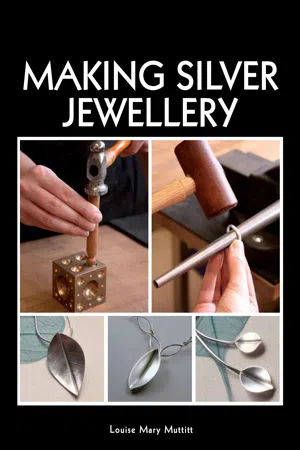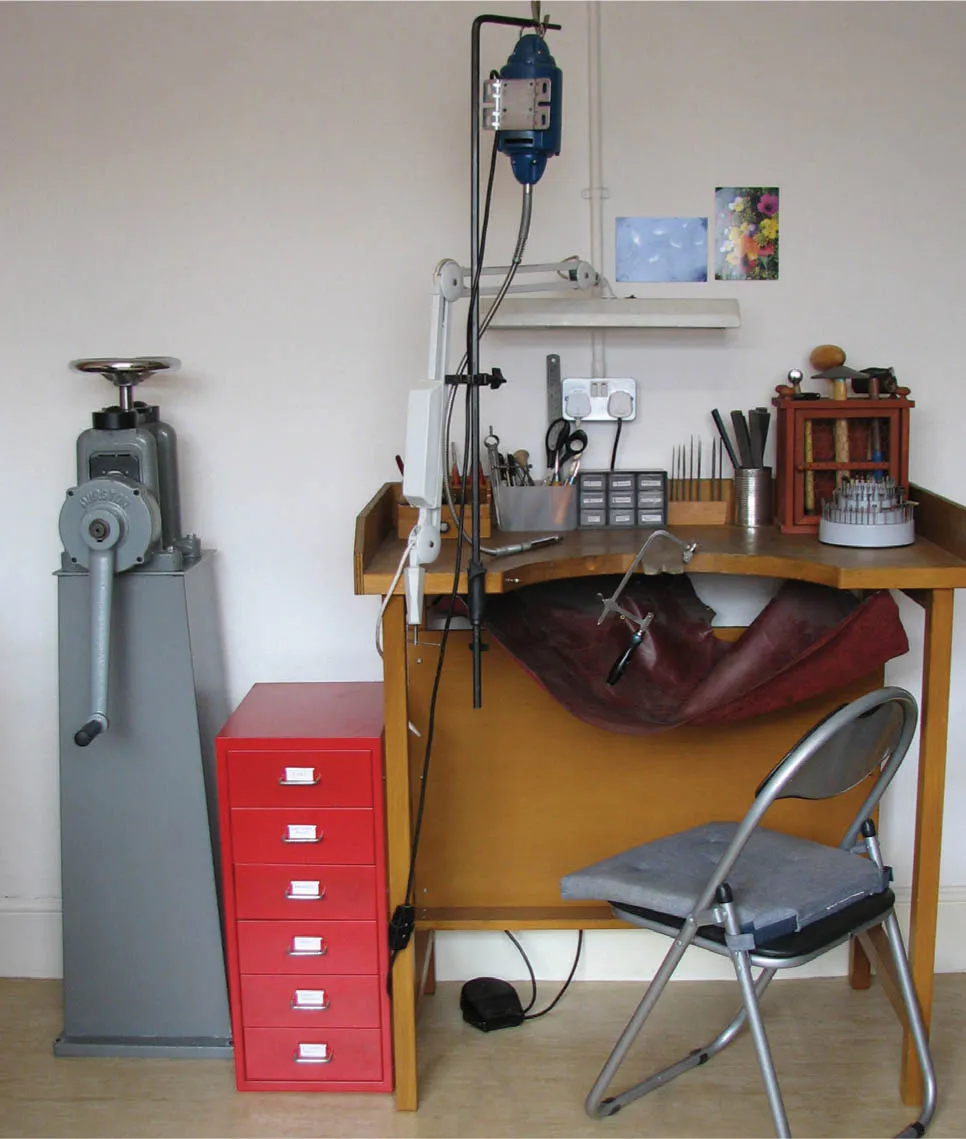
- 112 pages
- English
- ePUB (mobile friendly)
- Available on iOS & Android
Making Silver Jewellery
About this book
Silver is an exciting and versatile material for jewellery makers, both beginners and the more advanced, and nothing beats the satisfaction of creating and making your own designs. This book shows you how. Full of inspiring ideas and finished pieces, it explains over forty processes including the more advanced techniques such as fold forming and keum-boo and encourages the reader to experiment with their own designs. Contents include: Step-by-step explanations with bench tips from the author's own experience; advice on the jewellery process, including how to gather inspiration for designs and considerations for making wearable jewellery; a chapter dedicated to the surface finishing and polishing of silver to give your designs a professional finish. This is an accessible introduction to making silver jewellery with progression to more advanced techniques. Beautifully illustrated with 324 colour photographs.
Frequently asked questions
- Essential is ideal for learners and professionals who enjoy exploring a wide range of subjects. Access the Essential Library with 800,000+ trusted titles and best-sellers across business, personal growth, and the humanities. Includes unlimited reading time and Standard Read Aloud voice.
- Complete: Perfect for advanced learners and researchers needing full, unrestricted access. Unlock 1.4M+ books across hundreds of subjects, including academic and specialized titles. The Complete Plan also includes advanced features like Premium Read Aloud and Research Assistant.
Please note we cannot support devices running on iOS 13 and Android 7 or earlier. Learn more about using the app.
Information



Table of contents
- Cover Page
- Title Page
- Copyright Page
- Contents
- Introduction
- 1 The Workbench
- 2 Silver
- 3 Inspiration and Design
- 4 Starting to Work with Silver
- 5 Annealing and Soldering
- 6 Texturing Silver
- 7 Forming and Shaping Sheet Silver
- 8 Polishing and Finishing Silver
- 9 Working with Silver Wire
- 10 Findings and Chains
- 11 Decorative Techniques
- 12 Stone Setting
- Appendix
- Index